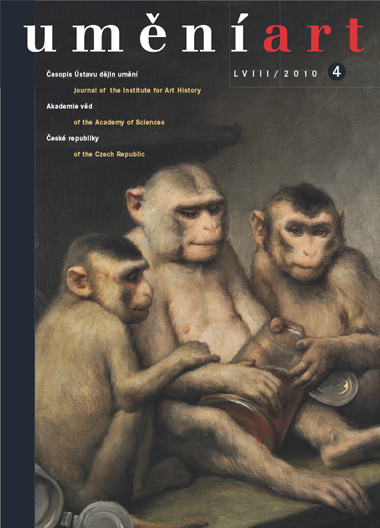Lucie Hřibová
Kodex hnězdenský. Postavy v dolní části scény Seslání Ducha svatého
In the Codex of Gniezno, which dates from the second half of the 11th century, there is a miniature depicting the Descent of the Holy Spirit that is one of a number of images in a group of manuscripts connected with the Codex of Vyšehrad. It has iconographic properties that ascribe it a unique place in the context of contemporary art. This article presents an iconographic analysis of one of the motifs in this miniature: the twelve male figures located in the lower section of the image. These figures are evidently representatives of the nations who, according to the text of the Acts of the Apostles, were present at the Descent of the Holy Spirit. (Acts 2, 5-13) The centre figure has an unusual covering on his head, which, by analogy with an illumination in the Psalter of Queen Melisende of Jerusalem, has been identified as a Kamelaukion, the crown worn by the Byzantine Emperors. The illuminators of both manuscripts captured only the helmet-like shape of the crown's original appearance and the composition of its surface, which was evidently determined by the arrangement of the gemstones in the crown. The figure thus represents the ruler of the representatives of the nations, which were grouped in a Pentecostal fellowship. The differences in the attire and the ages of the figures may express a kind of hierarchy of nations. In the upper section of the illumination there are two altars prepared for mass, one of which may be intended for the Virgin Mary and the Apostles, the main participants in the foundation of the Church and the direct recipients of the Holy Spirit, while the second altar is for the representatives of the nations, the less important members of the Pentecostal fellowship, and indirect recipients of the Holy Spirit who will receive the Holy Spirit through the Apostles. The illumination thus signifies the spread of the Gospel through the world, which is expressed through the motif of the representatives of nations and through the presence of two altars, one for the direct and the other for the indirect recipients of the Holy Spirit on which the rites of Christ's newly founded Church are to take place, so the image also symbolises the universalism of this Church.
Full-text in the Digital Library of the Czech Academy of Sciences:
https://kramerius.lib.cas.cz/uuid/uuid:127a365b-d414-b57f-b6ca-ae92700e5a74
< back

